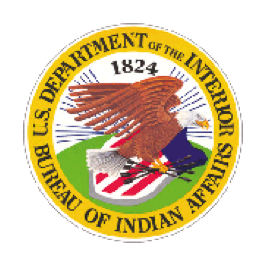Impacts of Highly Pathogenic Avian Influenza to Native American Cultural Practices
NAFWS Request for Information from the Department of the Interior
September 2, 2022
In February, a global outbreak of the Highly Pathogenic Avian Influenza (HPAI) H5N1 virus hit the United States. HPAI is a highly contagious disease impacting poultry and many species of wild birds. The H5N1 strain has a mortality rate of up to 90-100% for poultry. While some wild birds can contract the disease without symptoms, it can cause severe disease in others. The spread of avian influenza is difficult to control as it can spill over between poultry and migrating birds. As of August 17, 2022, HPAI has been detected in 45 states. Eagles are among the species impacted.

States with HPAI detections and number of positive samples in wild birds. August 30, 2022. Photo: USDA APHIS

Distribution of Highly Pathogenic Avian Influenza H5 and H5N1 in relations to Tribal lands in the United States. August 26, 2022. Photo: USGS
Cultural Implications of HPAI
HPAI could have devastating economic, subsistence and cultural effects on Tribes. Among these effects is distribution by the National Eagle Repository (NER) of eagle parts and feathers that are used in the cultural and traditional practices of Native American and Alaska Native Tribes throughout the United States.
On May 4, 2022, the NER, operating under the U.S. Fish & Wildlife Service, issued a letter to Tribes with an update on preventative measures taken in response to the HPAI H5N1 outbreak to address the extremely rare possibility of transmission between infected eagles and humans. These practices will reduce the already limited number of eagle parts and feathers distributed to Tribal members.
Request for Information on the Highly Pathogenic Avian Influenza (HPAI) H5N1 virus and its Associated Impacts to Native American Cultural Practices
After receiving numerous requests for information from Tribal natural resource managers regarding HPAI, the Native American Fish and Wildlife Society sent a formal letter to the the Department of the Interior (DOI) requesting information on (HPAI) H5N1 virus and its associated Impacts to Native American Cultural Practices.
These are the responses from U.S. Fish & Wildlife Service based on the letter NAFWS submitted:
- Will a 5-10% Chlorine (Cl) bath/spray inactivate the HPAI virus on eagle feathers? Understanding it is not for the entire carcass.
At this time, the World Organization for Animal Health recommends the following methods to ensure the destruction of avian influenza virus in feathers: washing and steam-drying at 100°C for 30 minutes, fumigation with formalin (10% formaldehyde) for 8 hours, or irradiation with a dose of 20 kilogram. - Is the Ethylene Oxide (EtO) autoclave process an option for decontamination and/or will it compromise the integrity of eagle feathers?
At this time, the World Organization for Animal Health has only recommended the method mentioned above to ensure the destruction of avian influenza and has not provided guidance for the use of an Ethylene Oxide autoclave process. If that decontamination process changes, we will be sure to communicate that to you and coordinate further. - Will guidance and protocols be established for the handling and processing for Tribal aviary/rehabilitation personnel in the event that a bird tests positive for HPAI in their facilities?
Guidance and protocols for aviary and rehabilitation personnel has been developed by both the Association of Fish and Wildlife Agencies and U.S. Department of Agriculture with input from the U.S. Fish and Wildlife Service. - Will there be a protocol set forth for Tribal personnel to be able to perform the testing for HPAI in the field? Is there the capacity for all personnel to do this testing or is this strictly a USDA and DOI activity?
At this time, USDA APHIS Wildlife Services and USGS National Wildlife Health Center are leading the national federal response to HPAI testing. To our knowledge, there are no protocols in place for anyone to test for HPAI in the field. We encourage you to contact these agencies to inquire about possible expansion of testing to other agencies/organizations and the future of field testing.
This request for information was submitted in hope of finding alternative solutions to the proposed destruction of eagle feathers and eagle parts, a process that is contradictory to Native American culture and traditions. At this time, an alternative has not been established.
Read the response letter below:








